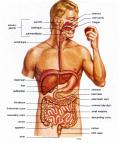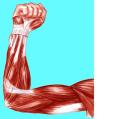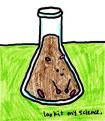|
espoir 09 |
Disclaimer
You know what to do.
|
Wednesday, December 28, 2005
Animals
Wednesday, December 28, 2005
Animals can be group in many ways, but the main group is the:#mammals #fish #birds #insects For animals,there are many ways of classifying them...for example: # skin texture #what they eat #how they reproduce ............and many more............. MAMMALS All mammals give birth to their young alive accept for the platypus and spiny anteater. If you think that the whale is a fish you are WRONG cause the whale is a mammal to! FISH All fishes lay eggs accept for the guppies. There are many species of fish,some of them are for you to keep as pets. BIRDS All birds lay eggs and they live in nests on trees.There are many kinds of birds and not all of them can fly because of the weight of their bones. We get bird nest drink from the swallows saliva. Magically, it has good use to our health and tastes good. INSECTS The same,all insects lays eggs but in different forms.Their cycles are too not the same although some may be identical. Most insects has six legs, the others belongs to other group that are not specified for example the spider. The other information will be given on another post! Monday, December 26, 2005
digestive system
Monday, December 26, 2005
 MOUTH - GULLET - STOMACH - SMALL INTESTINE - LARGE INTESTINE - ANUS # after chewing the food,the food enters our stomach and the food stays there for about 6 hours before it enters the small intestine. There, the food is churned up by the muscles together with digestive juices. #In the small intestine, the bits of food are being absorbed in the blood,the digestion ends here. #Food waste are carried to the large intestine where it carries the waste to your anus and is passed out. Sunday, December 25, 2005
Senses
Sunday, December 25, 2005
All of us have five senses: sight,taste,touch,hearing and smell.Sight #The sense of sight belongs to our eye,our eye is like a camera it can picture objects that reflects light to it. #On our eye,we have a protective coat on top(jelly like substance) called the vitreous humour.Also,we have our iris and pupil.The iris the outer part of the eyeball which controls the size of our pupil.The pupil is the black circle which is like the window to our eye. Taste #We use our tongue to taste.We have many different tastes like:sweet,sour,salty and bitter. #Our tongue DOES NOT have different sections for different tastes,there are only parts that senses are weaker for certain tastes. Touch #We touch things using our outer skin,there touch receptors all over the body embedded in the skin. #Our skin can feel: heat,cold, pain, pressure and light touch Hearing #The sense of hearing belongs to our ear,we can hear LOUD and SOFT sounds. #Our eardrums recieves a vibration from the sounds around us and that is how we hear Smell #We use our nose to smell,we have nose hair to prevent dust particles and mucus to stick the germs and from there we blow our noses Friday, December 23, 2005
Muscles
Friday, December 23, 2005
 Muscles #Most muscles comes in pairs,one pulls the other pulls back.Typically,there is a 'flexor' to bend or flex a joint,and an extensor to straighten it again. Fibers #Muscles are bundles of fibre-just like cells.Some contains more than the others. Striped strands #Most skeletal muscles are made of thin strands called 'myofibrils'. Along the myofibrils are dark and light stripes called striations which are actually two alterning substances - actin and myosin. *our muscles CONTRACT and RELAXES Monday, December 19, 2005
Boney
Monday, December 19, 2005
 Bones #Bones are very important to our body,they support our whole body together with the muscles wich will further explained later. An adult has approximately 206 bones in his body. About our joints #Moving joints They allow bones in a skeleton to move, we have the:
#Spinal joints The joints between backbones are called cartilaginous ,they allow little movement #Knee joints They are lubricated(oilied) by capsules of oil called synovial fluid, hence they are called synovial joints. Friday, December 16, 2005
Further into lungs
Friday, December 16, 2005
 Alveoli AlveoliTwo lungs #the windpipe leads into 2 lungs, the 2 lungs transfer oxygen from the air into the blood Airways #Lungs are like hollow trees with lots of branching airways called bronchioles. Air Sacs #at the end of each bronchoile there would be clusters of air sacs or 'alveoli', like buches of grapes. Air to Blood #When we breathe in, the oxygen passes through the thin walls of the alveoli and into the the blood vessels. Blood to air #the unwanted other gases passes from the blood through the alveoli walls into the lungs and goes out of the body as we breathe out. Thursday, December 15, 2005
Fun Facts
Thursday, December 15, 2005
 Breathing #u take abt 600 million breaths in a lifetime #if your lungs were opened out flat it would cover the size of a tennis court Respiration #What is respiration? Respiration includes breathing and also the conversion of sugar to the energy in body cells, it is called burning because it creates heat #What is aerobic respiration? It is when muscle cells burn sugar with oxygen. The opposite is called anaerobic respiration. |
Profile
Write stuff about yourself, like maybe... I am a boy, I eat carrots, I rock your socks.
Links
Friend loves
Friend loves
Friend loves
Friend loves
Friend
Tagboard
I suggest you add in a pop-up cbox, then it'll not look so weird.
|